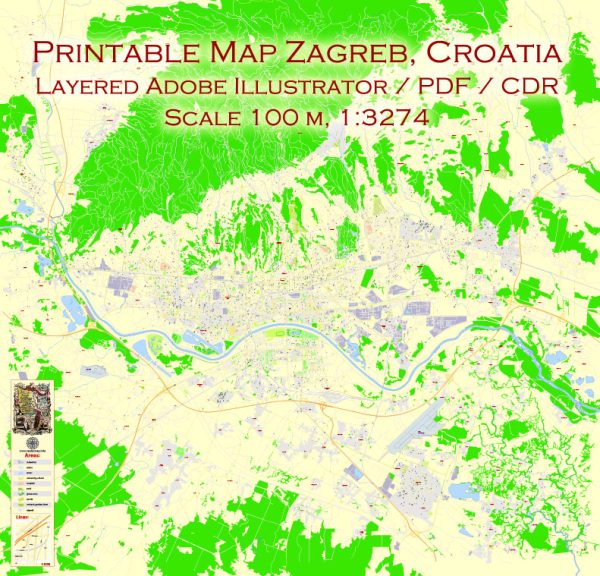Zagreb, the capital and largest city of Croatia, has a rich history and is known for its blend of historic architecture, modern infrastructure, and vibrant cultural life. Urban development in Zagreb has evolved over the centuries, reflecting the city’s growth and changing needs.
- Historic Core: The historic core of Zagreb is divided into two parts – the Upper Town (Gornji Grad) and the Lower Town (Donji Grad). The Upper Town features medieval and Baroque architecture with narrow streets and historic landmarks like St. Mark’s Church and Lotrščak Tower. The Lower Town is characterized by 19th-century architecture and wide boulevards.
- Infrastructure and Transportation: Zagreb boasts a well-developed transportation network, including trams, buses, and a main railway station. The city’s public transportation system connects various neighborhoods and suburbs, making it easy for residents to get around. The construction of a modern airport, Franjo Tuđman Airport, has enhanced Zagreb’s international connectivity.
- Housing and Residential Areas: Residential areas in Zagreb include a mix of old and new buildings. There has been a significant expansion of housing projects in suburban areas to accommodate the city’s growing population. Residential complexes, apartment buildings, and private homes can be found throughout the city.
- Green Spaces: Zagreb is known for its numerous parks and green spaces, such as Maksimir Park, Jarun Lake, and Bundek Park. These areas offer recreational opportunities and promote a healthy lifestyle within the city.
- Cultural Institutions: Zagreb has a vibrant cultural scene with numerous museums, galleries, theaters, and cultural institutions. The Croatian National Theatre, the Museum of Contemporary Art, and the Mimara Museum are among the city’s cultural landmarks.
- Educational Facilities: Zagreb is home to several universities and educational institutions, including the University of Zagreb, which is the largest and oldest university in Croatia. These institutions play a significant role in shaping the city’s intellectual and cultural landscape.
- Business and Commerce: The city has a growing business district, including the Zagreb Business Center and numerous commercial centers, attracting both national and international companies. The city’s economic development is closely linked to its position as the capital and economic hub of Croatia.
- Urban Renewal and Development Projects: Zagreb has been the site of various urban renewal and development projects. These initiatives aim to improve infrastructure, create pedestrian-friendly zones, and preserve historical buildings while accommodating the city’s modernization.
- Social and Cultural Diversity: Zagreb is a multicultural city, with a mix of different cultures, nationalities, and traditions. This diversity is reflected in the city’s neighborhoods and the variety of restaurants, festivals, and cultural events.
- Future Challenges: Urban development in Zagreb faces challenges such as traffic congestion, pollution, and maintaining a balance between preserving its historical heritage and embracing modernization. Additionally, the city is constantly working on improving infrastructure and public services to meet the needs of its growing population.
In summary, Zagreb, Croatia’s capital, continues to evolve and adapt through urban development initiatives that seek to maintain its historical charm while meeting the demands of a growing and dynamic city. Its rich cultural heritage, green spaces, and diverse neighborhoods make it an attractive place to live and visit.


 Author: Kirill Shrayber, Ph.D.
Author: Kirill Shrayber, Ph.D.